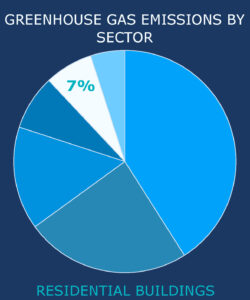California’s progress toward statewide carbon neutrality relies on decarbonizing the state’s buildings. Transitioning buildings from natural gas to electric heat pump technologies (which replace traditional heating and cooling systems as well as water heaters) is among the state’s highest priorities. Heat pumps are a highly efficient technology that provides all-electric space and water heating and cooling, acting essentially as a two-way air conditioner. In January 2022, the California Energy Commission set out an ambitious target of deploying 6 million heat pumps by 2030. With more than 14 million existing residential homes in the state, more than 75 percent of California’s existing buildings built before 1978, and heat pumps installed in only 6 percent of new construction, the state has a long way to go to meet its goals. The transition presents significant regulatory, economic, and infrastructure challenges, from high retrofit costs to utility regulations that may inhibit the removal of gas service. These challenges could substantially hinder progress throughout the state, particularly in communities with limited capital to finance projects, high proportions of renters, and older construction. Ensuring heat pump deployment in existing buildings protects low-income tenants and decreases utility costs is an important policy consideration, given the cost of living in California.
